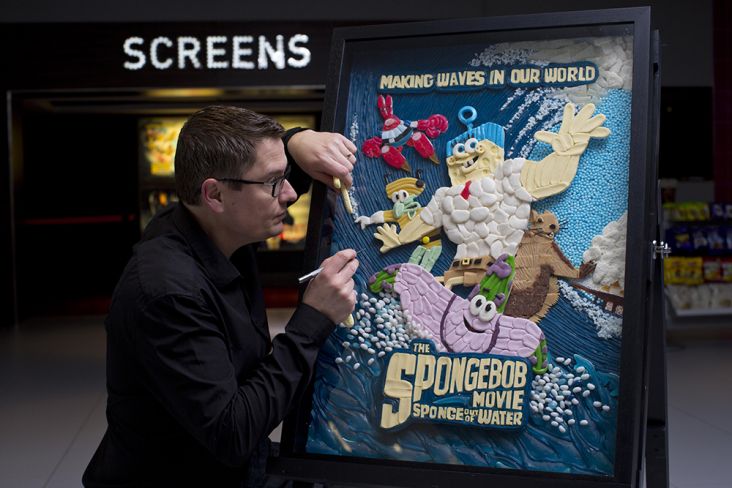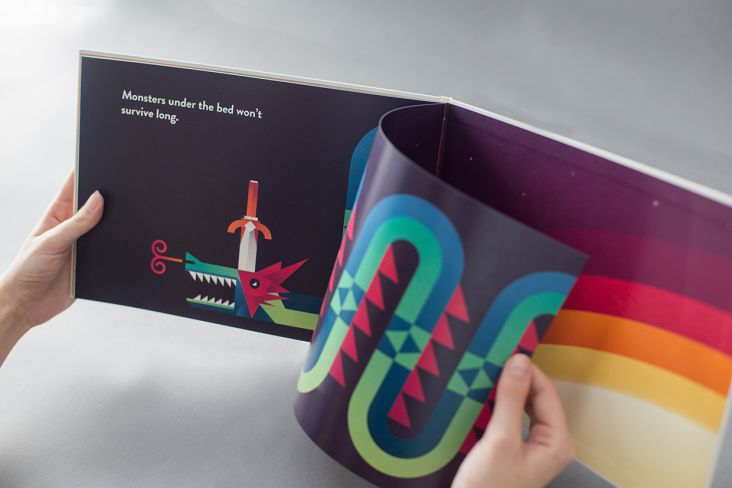Networking For Dummies: 10 tips for starting business relationships that last
Whether you work for yourself or are growing a studio, if you don’t master networking, progress will be hard going. But if you can strike up a relationship from a standing start, prosperity will naturally follow.

Image licensed via Adobe Stock
Ben Kench - author of Selling for Dummies, the UK’s bestselling book on sales technique - let me in on a few top tips for meeting people and being remembered. To become a networking don, always remember Ben's top ten tips.
1. The game’s hard enough, without beating yourself up
If you tell yourself, 'oh I’m no good at this, networking is purgatory on earth,' it’ll show on your face and in your body language. Tension repels friendship; who wants a tense new friend? No, you want a relaxed friend who feels good to be around.
Ben Kench says: "If you look around the room and see someone relaxed and visibly enjoying the network, and you think, 'oh I could never be like that,' then you probably never will. If you take the attitude, ‘if they can do it, so can I, they’re just a bit more experienced than me, I can learn the ropes soon enough’ - then you’re well on the way to being more comfortable talking to strangers."
2. If you’re nervous, get there early
The last thing a nervous networker wants is to do walk into a room that’s already hopping with noise and energy. If you get there early, you can make the room, rather than feeling you’re having to infiltrate it.
Ben Kench: “Be an active host, even when you’re not the official host. Stand near the entrance, say hello to people when they walk in, point them in the direction of the coffee bar or the cloakroom or toilets. This sort of ‘marshalling’ establishes you like a friendly, helpful person and sets you up as one of the ‘faces’ in the room. This means people will gravitate back you later on, as if they already know you.”
3. Be a sharp badger
Practice being eagle-eyed on the delegate badges, even when it’s a moving target dangling from a lanyard; being quick on the uptake will reap the rewards when you’re attempting to make friends.
BK: “Tell yourself this truth: my best friend was once a stranger. If you approach a friend, they’re more likely to become a friend. So by spotting the name on their badge, I can say ‘Hi Glenn, how are you doing?” like I already know you, and it puts the other person at ease. Most people do like talking; they find it hard getting started.”
4. Positioning & props
Finding the ideal starting position opens up a world of possibilities because sparks of inspiration for opening gambits come much easier if you’re stood somewhere with ready-made common ground.
BK: “If you’re stood near the coffee, or in a canapé hotspot, then you can catch someone’s eye and say something casual like, ‘really need the caffeine today, it’s so hectic in here’ or ‘these canapés are great. I would shake your hand, but my fingers are all sticky’ - anything that’s a bit quirky would be a good start. Provided your hands aren’t too sticky, offer a handshake with a sunny hello, good eye contact and introduce yourself by your first name – sounds basic, but it’s easy to get wrong.
“If you’re manning an exhibition stand, it’s wise not to stand right in front of it. Much better to park yourself close by, and keep a watchful eye out. That way, you don’t have the perennial problem of people shuffling past avoiding eye contact, trying their utmost not to get sold to. If you stand nearby, anyone lingering in front of your stand, you can bounce over and say hello.”
5. People first, business maybe
Forget putting pressure on yourself to tout your wares. The best thing you can do is be interesting and interested.
BK: “When you’re off to a network, get prepared to talk to people. Have some stories. Know the latest news, both in your industry and more generally. Keep an eye out for the lighter, funnier stories; recounting these is more likely to make an impact than waffling on about your business. Be prepared to talk about yourself, but mention your work briefly and passionately, then take the conversation elsewhere. Friends first, pitches later.
“Forget about selling: that shouldn’t be your objective. Networking isn’t a job interview. Set yourself the task of trying to learn something from everyone you meet. That’ll be much more natural than trying to find angles to big yourself up. Getting a chance to play teacher makes people feel wise, which makes them good about themselves - and people who make you feel good are the ones you want to talk to again. Go into each encounter with an enquiring mind and a strict policy of actually listening, not just waiting for your turn to pitch…ask intelligent questions, ones which expand the discussion and unlock more knowledge. You want to make the person you’re talking to feel like they’re the singular person you’re interested in, in the whole venue. And for the time you’re with them, make sure that rings true.”
6. Give and serve
One of the best ways to make friends at conferences and meetups is to make yourself useful.
BK: “Having something to give away will make you stand out. Whether it’s a physical thing, or some knowledge, like statistics or a report, or just a great piece of online content you know about and can offer to share. If you can make an offer to add a little bit of value for nothing, you’ve got an excuse to get in touch, and you’ll be received positively, and remembered as someone who isn’t grab-grab-grab, but someone who gives first and puts people and relationships first. These are the sorts of people that businesses want around, so give without expectation of reciprocation, and you might be surprised what comes back.”
7. Make sure your cards are the business
Business cards are an area where many SMEs and freelancers are missing a trick, through naivety and lack of effort. Ben Kench collects thousands of peoples’ cards in a year, so he knows what it takes to come out on top of the pile.
BK: “An unusual, informative business card is a powerful ally. So many people’s cards are an abject disaster, having a good one will get you remembered. Think about it: someone goes home with a pocketful of cards, and when they shuffle through them, if yours is a bit different, their mind will race back to the conversation they enjoyed with you. I’d recommend putting a picture of you on there, especially for freelancers, when it’s yourself that you’re selling. Any way you can, make your card stand out - perhaps a joke or a cartoon or even a quiz - is well worth the extra creative and financial investment. A quirky business card will also keep the conversation moving through those early tentative moments, and might even make the moment that properly melts the ice.
“I’d also advise using a one-way system for business cards - and if you’re collecting a lot of them, a method of sorting them on the spot, to save precious time after the event. I keep my cards in my jacket pocket, and the ones I receive, if I feel there’s some spark of connection with the person, their card goes in one trouser pocket, if not so much, then the other. But I would still follow up both piles nonetheless because you never know…”
8. Diplomatic exits for dummies
Not everyone is going to be a barrel of insights and a right good giggle. If you’re a frequent flyer on the networking scene, you’re going to get stuck with the occasional droning bore.
BK: “If you’re stuck talking to someone you feel no connection to, and you don’t want to do business with, there will come the point when you need to back away gracefully. You can do this by offering to help them find someone more appropriate to talk to. Asking who they came to see - or if they know anyone else here - will send out the message it’s time to move on. If they don’t take the hint, you’ve got two options. Ask again, and walk them to their person of choice, or say “we’re here to network, and it’s rude of me to hog you - bye.”
9. If you don’t follow up, it wasn’t worth going
If you’re offended by rude words, look away now.
BK: "When I coach on networking, I preach the mantra, FUK IT. It’s an acronym borrowed from a very good friend of mine, Will Kintish that stands for follow up, keep in touch - this is the real lifeblood of networking. Following up is where relationships are forged. If you don’t follow up, you shouldn’t bother going to networking functions. But if you keep in touch, sending roughly five ‘touches’ over six months, the next time you bump into the person, the interaction will be like you know them. If there’s been an obvious conversation, something you’ve got to share or want to learn more about, follow up on that. The others, send them an email telling them you’re not going to bombard them, but you’d like to send them some stuff once in a while.”
10. Do you want a good newsletter or a bad newsletter?
Keeping in touch means moving from the physical to the virtual world, but the same principles still apply.
BK: "Some of the ‘five touches’ will involve sending a newsletter. It’s essential to make sure yours is worth reading. Content marketing is all the rage, and it’s about not being pitchy, instead of giving away something that people will value, in the hope that they’ll ask for more. So make your newsletter enjoyable in and of itself - industry news, opinion pieces, a calendar of events that you’re going to be attending. As always, try and be fresh and a bit original.
“You’re going to be following people on Twitter and hooking up on LinkedIn too, so remember the golden rules again. Ask good searching questions, and be prepared to take responsibility for being interesting - you’re not going to enhance relationships if all you do is talk about yourself and your business."




 by Tüpokompanii](https://www.creativeboom.com/upload/articles/58/58684538770fb5b428dc1882f7a732f153500153_732.jpg)

 using <a href="https://www.ohnotype.co/fonts/obviously" target="_blank">Obviously</a> by Oh No Type Co., Art Director, Brand & Creative—Spotify](https://www.creativeboom.com/upload/articles/6e/6ed31eddc26fa563f213fc76d6993dab9231ffe4_732.jpg)

















